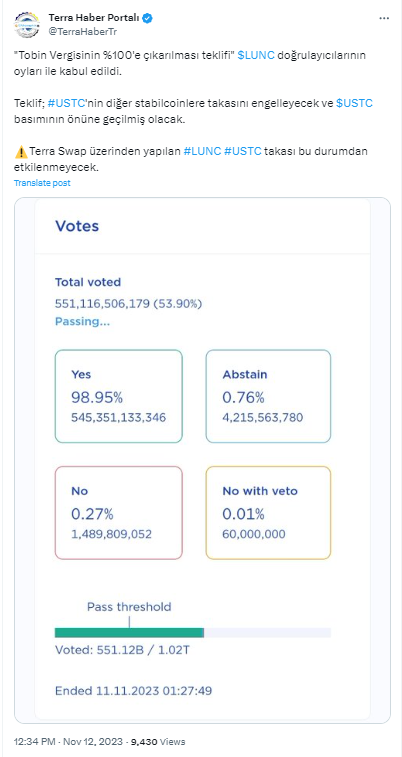As the cryptocurrency landscape evolves, Luna Classic (LUNC), the resilient successor to the fallen Terra ecosystem, finds itself in a precarious position. The Terra ecosystem, launched in April 2019, faced a catastrophic collapse when its co-founder, Do Kwon, fled South Korea with $135 million of Bitcoin. The ecosystem relied on stablecoins tied to various fiat currencies, with Terra’s native coin, LUNA, at the core of its algorithmic design.
The downfall began in May 2022 when the price of UST, a stablecoin in the Terra network, fell below its $1 peg. Despite efforts to support the peg, the algorithmic system caused hyperinflation in LUNA, rendering it nearly worthless. The community split, leading to the creation of Terra Classic, with coins like Lunoc (LUNC) and TerraClassicUSD (USTC) emerging as the new names for the original platform’s assets.
Why did LUNC Rise?
-
Tobin Tax Influence and Community Support
James Tobin, a respected economist and former Federal Reserve Board member influenced the decision to implement a 0.5% burn tax on Luna Classic transactions. Tobin recommended a 0.5% charge, aligning with the principles of Currency Transaction Taxes. Major exchanges like Binance and KuCoin supported this economic strategy, leading to the successful proposal in May 2023.

While the tax increase has significantly reduced the LUNC supply, uncertainties persist regarding Luna Classic’s sustained recovery. Despite having a market valuation above $385 million, challenges remain, especially with the blockchain’s transaction fee structure in a competitive landscape.
LUNC’s Current Status and Analyst Insights
As of November 28, 2023, Luna Classic boasts a market valuation exceeding $536 million, and the DeFi ecosystem has a Total Value Locked (TVL) of around $1.66 million. However, decentralized applications on the platform have limited popularity, raising questions about Luna Classic’s broader appeal beyond speculative trading.
After being down for over a year, prominent LUNC trader Derek tweeted that the coin had finally broken out of its bear market and was trading above the 200 Moving Average (MA). For LUNC, this bullish divergence is a significant step toward a possible trend reversal.
Derek stressed the significance of LUNC maintaining support above the 200MA level, even if this optimistic trend is beneficial in and of itself. Nonetheless, he pointed out that a little decline below the line wouldn’t be disastrous since the Relative Strength Index (RSI) is still high at 58, indicating that bullish sentiment would likely persist.

In conclusion, while some analysts believe Luna Classic is showing signs of recovery, the blockchain’s fee structure and the competitive nature of the crypto space pose ongoing challenges. Whether Luna Classic can evolve into a decentralized finance and NFTs hub remains uncertain, emphasizing the need for continuous adaptation and improvement in a rapidly changing crypto landscape.
 cryptonews.net
cryptonews.net
